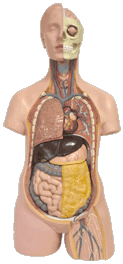At WiseGEEK, we're committed to delivering accurate, trustworthy information. Our expert-authored content is rigorously fact-checked and sourced from credible authorities. Discover how we uphold the highest standards in providing you with reliable knowledge.
What Factors Affect Allegra® Dosage?
Fexofenadine is an antihistamine that is often found as one of its brand name preparations, Allegra®. Usually, this medication is taken to control allergies, but the specific Allegra® dosage that a person may need depends on several factors. Age, the presence of other medical conditions, and the form that this drug is taken in can all affect the optimal dose.
Patients over 12 years of age typically take this drug in its tablet form to provide allergy relief. The usual adult Allegra® dosage is 180 milligrams (mg), taken once a day. Alternately, 60 mg may be taken two times per day. Children between the ages of 6 and 11 years old may also take these tablets, but at a reduced dosage. Normally, children only need two 30 mg doses per day.

The kidneys are the major organs that help remove this drug from the body. Kidney damage can cause Allegra® to build up within the body if it is taken at these recommended doses, which can in turn potentially cause unpleasant or harmful side effects in some patients. For this reason, people with kidney damage usually take a lower Allegra® dosage than healthy individuals. Adults with conditions affecting the kidneys often take a single 60 mg dose per day, and children normally only take a total dose of 30 mg each day. Depending on the level of kidney function and the severity of the allergies, some individuals may be able to increase their dose.
Younger children, and adults that cannot or do not wish to swallow tablets may use this drug in a liquid form. Each milliliter (mL) of the liquid formula contains 6 mg of the medication. Adults, and children over 12 years old would take 10 mL, or 60 mg, two times a day, and children between 6 and 11 years old often take 5 mL, or 30 mg, two times a day. For children between 2 and 5 years of age, an even smaller Allegra® dosage of 2.5 mL, or 15 mg, may be taken one or two times every day.
Another form of this medication is a lozenge that dissolves on the tongue. Each lozenge usually contains 30 mg of fexofenadine. Adults may take two lozenges to control allergy symptoms quickly, equivalent to an Allegra® dosage of 60 mg, up to twice a day. For children, an amount of just one lozenge, or 30 mg, taken twice a day is typically enough to provide allergy relief.
AS FEATURED ON:
AS FEATURED ON:










Discuss this Article
Post your comments